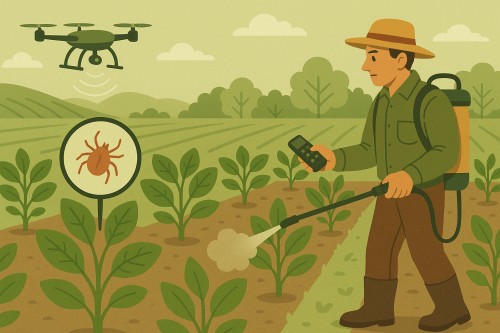
Discover how water pumps transform irrigation with efficiency, crop health, savings, and sustainable farming.
Before diving into the benefits, it’s important to understand how water pumps work. A water pump essentially moves water from its source—whether it’s a well, river, reservoir, or tank—to your irrigation system. Pumps can be electric, solar, or fuel-powered and are chosen based on flow rate, pressure requirements, terrain, and energy availability.
Most common irrigation setups that rely on water pumps include:
Given their importance, it’s surprising how many growers still rely on manual or gravity-fed systems that can be inconsistent, inefficient, or both. For those looking to upgrade their system, a first effective step is to purchase a Water Pump Online from reputable agricultural equipment providers. This allows access to a range of reliable and cost-effective options suited to your land size, crop type, and water source.
The exact control that a water pump provides over water use is one of the biggest advantages of employing one. Due to the growing global concern over water scarcity, efficiency is now not only desirable but also essential. Pumps reduce waste by supplying water precisely where and when it is required.
Pump-powered irrigation allows farmers to install more sophisticated systems, such as drip and micro-sprinklers, that transport water directly to the root zones, in contrast to conventional flood irrigation techniques, which frequently cause runoff and evaporation.
According to a study by the International Water Management Institute, crop yields can be maintained or even increased while water consumption is reduced by up to 50% through the use of drip systems and water pumps.
Plants that receive regular and timely watering are healthier. By automating irrigation schedules with water pumps, farmers can make sure crops get the proper amount of water during crucial growth phases like germination, blossoming, and fruiting.
Too much or too little watering can stress plants, increasing their susceptibility to disease and decreasing their output. A dependable pump makes water distribution predictable, avoiding problems in the field such as dry patches, nutrient leaching, and root rot.
Additionally, crops irrigated with pump-supported systems frequently exhibit consistent growth, making management easier and harvest time better.
It takes a lot of work and time to do irrigation by hand. Water pumps automate the distribution of water, freeing up labour for other important duties like harvesting, planting, and pest control.
Water transportation by hand or bucket is not only ineffective but also physically taxing in rural or isolated regions. That strain is removed by a pump, which enables one person to handle tasks that would typically need a whole team.
Pump-based irrigation can save time for medium- and large-scale farms, which can result in operational efficiency and financial savings.
“Modern farming doesn’t always mean bigger, it means smarter. Water pumps don’t just move water; they move potential into every corner of your land.”
Not every grower has the luxury of a centralized irrigation infrastructure. Water pumps make it possible to draw water from varied sources—rivers, lakes, ponds, borewells, rainwater tanks, and even recycled water systems.
This adaptability is especially beneficial during dry spells or when rainfall patterns are unpredictable. Being able to switch sources ensures uninterrupted irrigation and builds resilience into your agricultural system.
Water pumps make it possible to use moisture sensors, timers, and programmable irrigation systems. This brings water management to a whole new level of accuracy. You can react to real-time data instead of speculating on when to irrigate.
With a few taps, some sophisticated systems can even turn pumps on and off or change flow rates remotely through mobile apps. When handling several crop kinds with varying watering requirements or in polyculture farming, this degree of customisation is especially helpful.
Although buying a water pump involves an initial expense, there are significant long-term financial benefits. Higher yields, cheaper labour expenses, lower water bills, and less crop loss from irregular watering are all results of efficient irrigation.
Using a pump-based system guarantees that every drop is used efficiently in areas where water is metered or regulated. This optimisation can greatly increase revenue for commercial crops.
After converting from manual to pump-supported irrigation, even tiny farmers have reported significant returns. These include better harvest uniformity and lower input costs.
© 2024 Crivva - Business Promotion. All rights reserved.